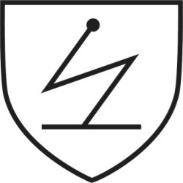- today
- label Guide
- favorite 0 likes
Protective clothing is intended to cover or replace personal clothing. It protects the employee against hazards. These garments are classified as category II or III PPE depending on the degree of risk. Protective clothing should be used when performing work where there is a risk of injury to the body or penetration of harmful factors through the skin. Particular hazards are high / low temperature, fire, hazardous chemical and biological substances, electricity, moisture, poor visibility and mechanical hazards. Protective clothing is subject to mandatory certification.
General requirements
EN 340 - protective clothing - general requirements
Requirements for ergonomics, size marking, harmlessness and marking of protective clothing. In addition, there should be information that the manufacturer is obliged to provide with the clothing.
Climatic conditions
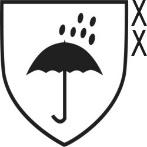
EN 343 protective clothing - protection against rain
The standard specifies resistance to water penetration (the level of soaking through the garment) and resistance to steam penetration.
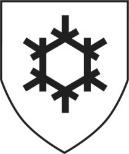
EN 342 - Protective clothing - Sets and garments to protect against cold
Methods and requirements for testing individual garments as well as sets intended for protection against cold. This clothing can be used in temperatures below -5 degrees.

EN 14058 - Protective clothing - Clothing to protect against cold.
Requirements and methods of testing individual elements of a set of clothing that protect the body from cooling down. Clothing does not have to be made of waterproof materials, it can only protect against the cold locally.
Heat resistance and flammability

EN ISO 11611 (replaces EN 470-1) - clothing for use during welding.
The clothing is designed to protect against small drops of molten metal, sparks, short contact with a flame, as well as UV and heat radiation. It provides a limited degree of electrical insulation from DC conductors up to 100V.

EN ISO 11612 (replaces EN 531) clothing for workers who are exposed to hot agents.
Letter code A- Clothing protects against short-term contact with fire and limits its spread
Letter code B- protection against at least one type of hot factor.
Letter code C- thermal radiation
Letter code D- large splashes of molten aluminum
Letter code E- large splashes of molten iron
Letter code F- contact heat
Visibility
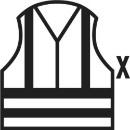
EN ISO 20471 (replaces EN 471) - high visibility warning.
Standard regarding the requirements of clothing visually signaling the presence of the user in hazardous conditions. Color and reflectivity, location of reflectors, information on cleaning. The standard maintains the division of clothing into 3 categories (division according to the minimum areas of reflective materials); 1st lowest category.
Contamination of the environment
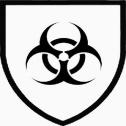
EN 14126- protective clothing against biological agents
It guarantees protection against infectious agents. Type designation with suffix "-B", e.g. "Type 3 - B"
EN 1073-2- protection against radioactive contamination
Protection against penetration of radioactive particles. There is no protection against radioactive radiation.
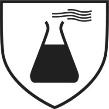
EN 13034 - protection against liquid chemicals
TYPE 6- Requirements for clothing with limited protection against liquid chemicals. The standard deals with the requirements of clothing that protects against splashes of liquid and short-term contact with liquid chemicals.

EN 13982-1- protection against solid particles
TYPE 5- Requirements for garments designed to protect the entire body from airborne solid chemical particles.

EN 14605 protection against liquid chemicals
TYPE 3- for clothing that protects the whole or part of the body against the action of a chemical substance in the form of dust or spray (TYPE 4)

EN 943 - clothing that protects against liquid, gaseous chemicals, aerosols and solid particles
Standard specifying the requirements for ventilated / non-ventilated, gas-tight (TYPE 1) / non-gas-tight (TYPE 2) protective clothing. It specifies the requirements for gas-tight protective clothing.
Electricity
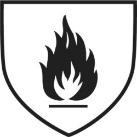
EN 61482-1-2 / IEC 61482-1-2 - clothing providing protection against thermal hazards caused by an electric arc.
Standard for methods of testing clothing materials and articles dedicated to workers exposed to an electric arc. The clothes serve as protection against the effects of an electric arc, i.e. flames, high temperature and spatter. The standard is divided into 2 classes, they depend on the degree of protection at 400V / 50Hz voltage and 0.5s arc duration:
Class 1 - 4 kA
Class 2 - 7 kA.
|
|
EN 1149Electrostatic properties of protective clothing. The standard specifies test methods for measuring surface resistivity, volume resistance of materials and the decay of electrostatic charge from the surface of the garment material. It also specifies electrostatic requirements for protective clothing that discharges static electricity to exclude sparks that could cause an explosion or fire. Antistatic clothing is intended for use in potentially explosive atmospheres. |
|
|
EN 61340-5-1Static electricity. Protection of electronic devices against static electricity. Antistatic clothing that meets the above-mentioned standard (ESD clothing) is intended for safe use in EPA zones (protective zones against electrostatic discharge). |
|
Inne: |
|
EN 14644-1Clean rooms and associated controlled environments. The standard applies to the classification of air purity in clean rooms as well as in related environments controlled only in terms of the concentration of dust in the air. Working clothes and its use (washing) should be adapted to the requirements of the above-mentioned standard (non-dusting clothing) so that it can be used in clean rooms. |
|
|
|
EN 381-5Protective clothing for users of handheld chainsaws. Leg protection requirements.
|


